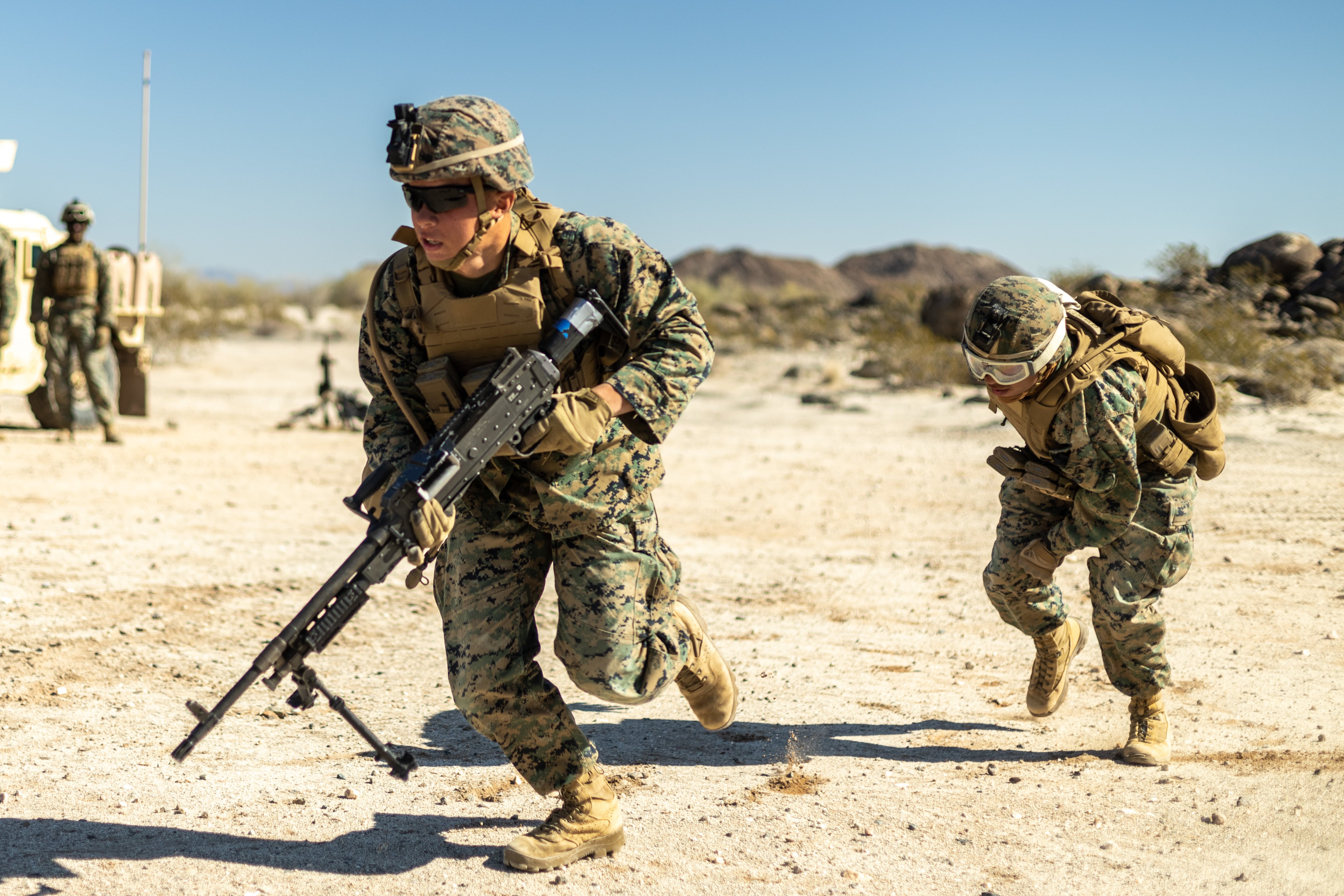Marines and soldiers are trading notes on how to defend their airspace in an increasingly complex and threatening battlespace.
For the first time, Marines with Marine Air Support Squadron 3, Marine Air Control Group 38, out of the 3rd Marine Aircraft Wing at Camp Pendleton, California, hosted the Army’s air defense artillery fire control officer course, according to a release.
The three-week course, which ran in July, focused on those fire control officers’ role within the Army’s MIM-104 Patriot surface-to-air missile system.
RELATED

In recent years, multiple senior Army leaders have pointed to the high — and rising — demand for air defense units in overseas deployments and exercises. The Army is adding hundreds of new air defense specialties in the coming years, Army Times previously reported.
The Marine Corps has restructured its forces to build Marine littoral regiments that include littoral anti-air battalions, which will carry more advanced radar and the Medium Range Intercept Capability, or MRIC, a short-to-medium range air defense system.
“The littoral anti-air battalions will integrate MRIC, the first organic surface-to-air missile system since HAWK was divested in the 1990s,” said Capt. Gabriel Smith, an air defense officer with Marine Air Support Squadron 3.
The air-defense need is evident this year alone after three U.S. troops were killed and dozens more injured in January from a one-way attack on Tower 22, an outpost on the Syria-Jordan border.
More recently, eight U.S. troops were injured in an aerial drone attack on the Rumalyn Landing Zone in Syria on Aug. 9.
The Army course at Pendleton gave Marines a chance to learn how to integrate the Patriot system, or systems like it, in their air defense network.
“What the Marines gained from this course is an ability to take this knowledge back to our units and train Marines on Army air defense capabilities,” said Maj. John Christensen, MASS-3 operations officer.

The Patriot missile system can track up to 100 targets at a range of nearly 100 miles and defend a nine- to 12-mile area, according to a Congressional Research Services report.
The MRIC system has a range of up to 40 miles and houses 20 missiles. The number of targets the system could track was not listed in publicly available government data.
While the Patriot and MRIC are distinct systems, how they’re used overlaps enough for the training to apply to Marines, especially when they serve as sector air defense commanders. Those positions require Marines to assess a host of options, or tools, to detect and strike down aerial threats.
“As the Marine Corps looks to incorporate our own organic system, it’s important that we look to the joint services for procedures, training, tactics and techniques for how to best and most effectively use that system,” Smith said.
The collaboration goes beyond the Army and Marine Corps. The Air National Guard hosted the course in May at Joint Base Lewis-McChord, Washington, according to the release.
“The importance of this training to the joint force and to the Marine Corps cannot be overstated,” said Lt. Col. Tyrone Anub Jr., MASS-3 commanding officer. “Every missile needs to count — and every second does count.”
Todd South has written about crime, courts, government and the military for multiple publications since 2004 and was named a 2014 Pulitzer finalist for a co-written project on witness intimidation. Todd is a Marine veteran of the Iraq War.








